We're
The Solar Energy Company
- Solar Power Plant
- Semi-Integrated Solar Street Light
- All-in-One Solar Street Light
- Conventional Solar Street Light
- High-Mast Solar Street Light
- Home-Backup System
- Solar Charge Controller
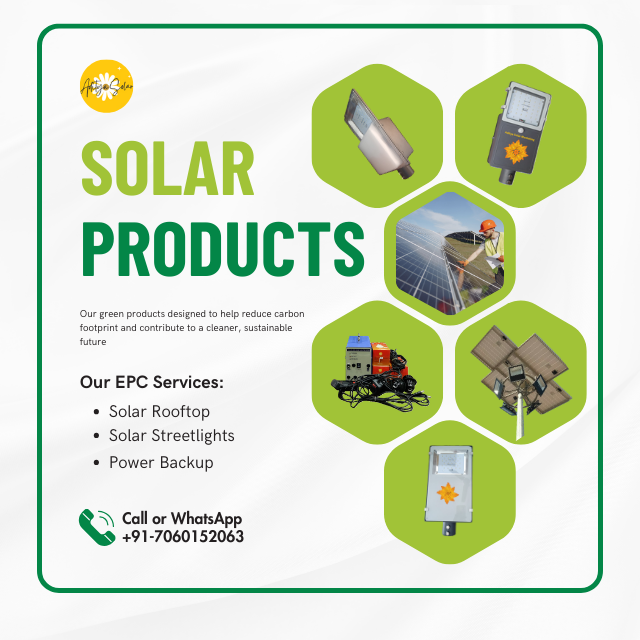
Solar Street Light Models
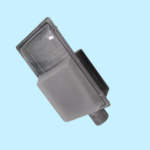
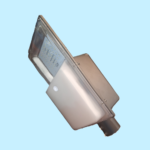
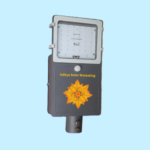
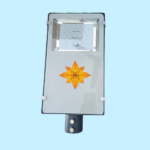
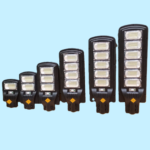

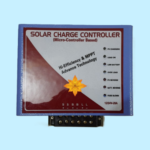
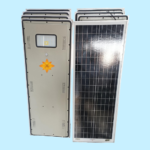
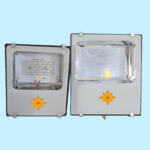
Semi-Integrated Solar Street Light
Also known as Two-in-One Solar Street Light, and sometimes referred to as Integrated Solar Street Light, this product is a blend of two main components. The first component is the solar panel, mounted on a durable MS powder-coated structure, which is positioned to face south, maximizing exposure to sunlight. The second component is the LED street light, which includes an inbuilt lithium-ion battery, motion sensor, and solar charge controller, all enclosed within a PDC housing. This LED light is mounted on a separate GI arm, allowing for flexible positioning in the desired direction.
Components of semi-integrated solar light: Typically consists of LED luminary, inbuilt Lithium-ion battery, solar panel and solar charge controller.
How semi-integrated solar street light is installed: Easy to install as comes with pre-assembled components inside luminary and solar panel can be placed on top of the pole. Panel and light can be adjusted for optimum performance.
How Semi-Integrated Solar Street Light Works?
These solar street lights are designed to operate automatically, switching on at dusk and off at dawn. Models equipped with motion sensors enhance energy efficiency by adjusting the light’s brightness when motion is detected within a specified range, typically 12 meters using a PIR sensor.
Different models of Semi-Integrated Solar Street Lights
We offer solar street lights with power ratings from 9W to 60W, featuring multiple LEDs (1W each). These models are available with or without motion sensors and come in two light colors: Cool White and Warm White. The different model options include:
- PDC Model
- Glass Model
- Polycarbonate Model
- Slim Model
Battery Backup
Our standard semi-integrated solar street lights come with a two-night backup. However, this can be customized to meet specific tender requirements or customer preferences, provided there is adequate battery capacity.
All-in-One Solar Street Light
All-in-One Solar Street Light
Also known as Integrated Solar Street Light, this product is designed as a single, compact unit. It combines the solar panel, LED luminary, lithium-ion battery, motion sensor, and solar charge controller, all enclosed within the solar panel casing itself.
Components of All-in-One Solar Light
The primary components of an All-in-One solar street light are: LED luminary, inbuilt Lithium-ion battery, solar panel and solar charge controller.
How All-in-One Solar Street Light is Installed?
Installing an All-in-One solar street light is quick and straightforward. Since all the components are pre-assembled into a single unit, the light can be easily mounted at the top of the pole with just a few nut and bolt connections.
How All-in-One Solar Street Light Works?
These lights are designed to operate automatically, turning ON at dusk and OFF at dawn. Models with motion sensors increase energy efficiency by brightening the light when motion is detected, typically within a 12-meter range, using a PIR sensor.
Battery Backup
Our standard All-in-One solar street lights come with a two-night backup. However, the backup can be customized to meet specific tender requirements or customer preferences, depending on the battery capacity.
Conventional Solar Street Light
Conventional solar street lights are primarily used in areas where bright lighting is needed, with a focus on providing autonomy for two or more nights.
Components of Conventional Solar Street Lights are:
LED Luminary, Lithium-ion battery, inbuilt or external solar charge controller and solar panel.
Installation of Conventional Solar Street Lights
Solar panel is placed at the top of the pole with help of mounting structure. LED luminary is mounted under the solar panel on an adjustable arm. Under the LED arm battery box is mounted while charge controller can be inbuilt or externally placed inside the battery box. All components—solar panel, battery, and luminary—are interconnected with DC wiring. Installation process typically takes more time and effort compared to All-in-One and Semi-Integrated solar street lights due to the assembly of multiple components on the pole.
How Conventional Solar Street Light Works?
These street lights operate automatically, turning ON at dusk and OFF at dawn, without the need for manual intervention.
Battery Backup
Conventional solar street lights usually offer a two-night backup to ensure continuous operation during cloudy or low-sunlight days. However, customization options are available to meet specific tender or customer requirements.
High-Mast Solar Street Light
Solar High Mast Lights are advanced lighting solutions designed to illuminate large areas such as highways, industrial zones, public spaces, etc.
Components of Solar High Mast Lights: Solar panel, Solar flood light-LED, Battery bank, Solar charge controller and a Mast structure which is a tall pole that supports the light fixtures at a height, often ranging from 12 to 30 meters and sometime motorized system is used for pulling up and down the whole system for maintenance.
How Solar High Mast Lights are installed? Generally solar panel, battery in a box and charge controller all mounted on a movable structure. This structure can be moved up and down for installation or maintenance with the help of inbuilt pully system. While the installation process is more complex due to the height of the mast, is still efficient.
How It Works
Solar High Mast Lights operate automatically, switching ON at dusk and OFF at dawn. They provide consistent, high-intensity lighting throughout the night, with the solar panels recharging the batteries during daylight hours. The system can function independently of the grid, making it ideal for remote or off-grid locations.
Battery Backup
Solar High Mast Lights are typically designed with a backup of two or more nights, ensuring uninterrupted lighting even during cloudy days. The battery capacity can be customized to meet specific requirements for larger projects or areas with limited sunlight.
Best practices for Solar Business
Where to Install Solar Street Lights?
Solar street lights are ideal for locations that lack an electrical supply or for organizations looking to reduce their carbon footprint. The initial investment cost for solar street lights is significantly lower compared to establishing a new grid supply line.
Where to Supply Solar Street Lights?
In India, over 86% of solar street lights are supplied to rural and semi-urban areas through government tenders, while around 8% are provided through Corporate Social Responsibility (CSR) projects. Government tenders usually involve not only the supply and installation of solar street lights but also their maintenance, often for up to five years. These tenders can be substantial, sometimes requiring tens of thousands or even hundreds of thousands of units.
What is the Most Challenging Aspect of Government Tenders for Solar Street Lights?
Winning a tender and handling the supply and installation process can be relatively straightforward, but the real challenge lies in maintaining the solar lights during the warranty period, which typically lasts up to five years. Since these lights are often installed in remote areas, addressing issues requires expensive manpower and can take more time than allowed by the tender’s terms. If the complaint rate exceeds 4%, the project may incur significant losses.
How to Execute a Profitable Tender?
While winning a tender often means offering the lowest bid (L1), ensuring profitability depends on minimizing or eliminating maintenance costs once the project is completed. Avoid installing cheap, low-quality lights with a high complaint rate, as they may reduce initial costs but will lead to losses over time due to higher maintenance expenses. Prioritizing quality will help sustain profitability throughout the project.
How to Source Material?
While numerous suppliers exist locally and nationwide, procurement and pricing are secondary. The key is to understand your customer and there specifications. Always ensure your source meets technical standards while providing reliable materials as per MNRE, MES and NTPC requirements. Explore global solar industry insights at Posharp.com – The Source for Renewables all over the world.
